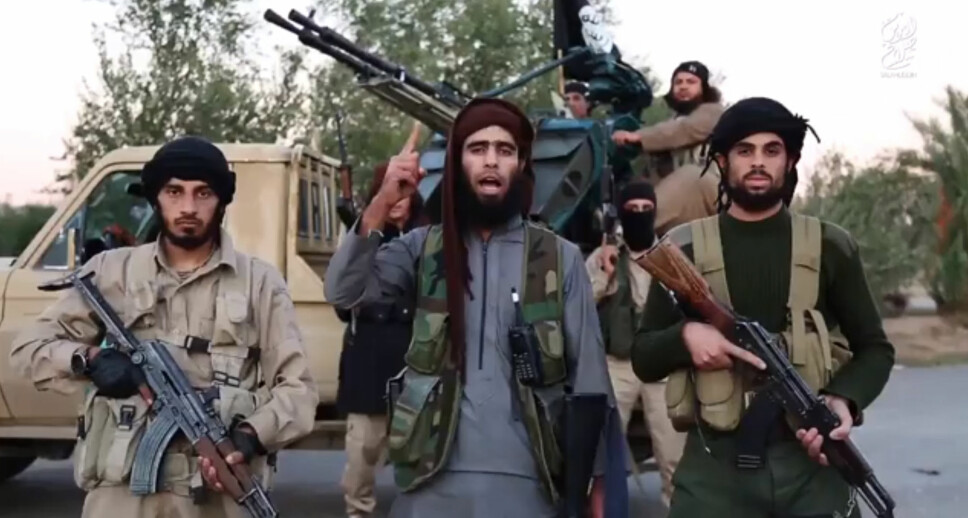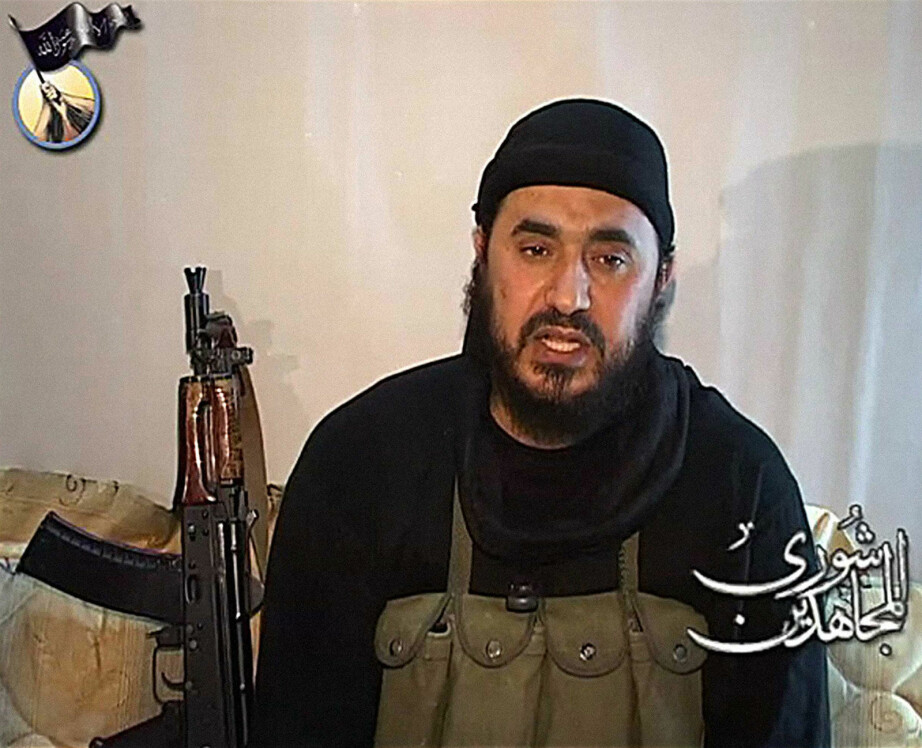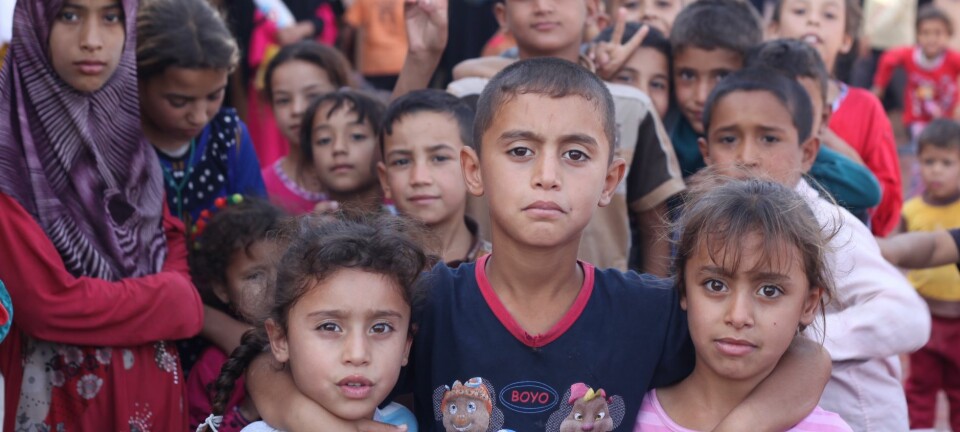
Why do jihadists cry?
Norwegian researcher has collected hundreds of stories about terrorists crying over the past decade. For it appears that terrorists shed quite a few tears when they are together. But why?
It has been said of one of the most brutal leaders of the al-Qaeda terrorist group that “he cried all the time. He was very sensitive, like a child.”
Abu Musab al-Zarqawi was called both the butcher and the weeper.
We’re used to seeing jihadists with machine guns in their hands in cruel scenes from terrorist attacks or the war in Syria.
But jihadists also appear to be very sentimental.
They cry when they pray, listen to sermons or worship. They cry before they go into battle and afterwards, for fallen comrades and for Muslims who suffer.
“You can be a bloodthirsty warrior and at the same time someone who cries a lot,” says Thomas Hegghammer, chief researcher at the Norwegian Defence Research Establishment (FFI).
He has studied accounts of weeping among the followers of the holy war for Islam.
“Crying is the clearest example of the importance of emotions in such environments. Life on the inside is highly emotional,” says Hegghammer.
For jihadists, tears and brutality go hand in hand. This may come as a surprise to many.
“They’re profiled as being very macho and violent. In the West, we don’t associate that with crying and sensitivity,” says Hegghammer.
But why do the holy warriors engage in loud sobbing?
Crying in disappointment
They say they do it for their religion, especially in their worship and fear of God.
Jihadists like to cry with others, and they show this through their propaganda films.
There are clear rules for when it is okay to cry.
“The crying has to fit into ideological norms, preferably expressing fervour for their belief in the cause and in God,” says Hegghammer.
Members and supporters of the Islamic State (IS) and al-Qaeda terrorist organizations weep in various contexts.
One fighter was told by al-Qaeda leader Osama bin Laden that he was too overweight to take part in the fighting and reportedly cried in disappointment, because he would miss the chance to become a martyr.
Bin Laden himself often cried about the poor living conditions of Muslims.
Mullah Krekar, a convicted terrorist who lived in Norway for many years, cried when he preached in Kurdistan in the 1990s. The audience cried too.

Jihadi culture
Hegghammer has been collecting such examples for the last decade. His goal in studying the culture of extremists is to better understand them.
Between music, poetry and training programmes, international jihadists offer a lifestyle package to their followers.
“I started looking at things that don’t have anything to do with the fighting itself. And then I found that there was a good deal of weeping,” says Hegghammer.
He has painstakingly collected stories about crying while doing other research on jihadists.
Over the years, this has become hundreds of stories, taken from the extremists' own propaganda, documentaries, discussions on social media and autobiographies of defectors.
“You can get quite deep into what otherwise are closed environments by systematically collecting and studying their internal communication and propaganda. The Internet has made it possible to do this kind of a study,” says Hegghammer.
But this is not an exhaustive overview. The researcher would have gotten different insights if he could study the jihadists in their own environment.
Stoic soldier is the exception
Hegghammer doesn’t think that what he found was particularly surprising.
In the past, Europeans also combined warfare and crying, he says.
“The stoic ideal in modern Western warfare that a soldier shouldn’t cry is actually the exception,” says the terrorist researcher.
Crying with others happens within several religions, including Christianity.
But it wasn’t clear that weeping would be so ardent among members of IS and Al Qaeda, who identify with the direction of Salafism within Islam. Salafists usually condemn uncontrolled sobbing. Quiet crying is more their style.
Jihadists are more like their ideological enemies. The Sufis and Shiites are known to shed copious tears.
Perhaps they desire to imitate ancient heroes from Islamic history, which has a long tradition of weeping holy warriors.
Crying is also common in peaceful Muslim practice, such as during a sermon.
Both the Qur'an and other religious sources encourage weeping.
One of the hadiths – texts about how Muslims should live – says about the Qur'an, “When you read it, cry. If you cannot cry, then pretend to cry."

Staged crying?
Are terrorists pretending? Or is their crying genuinely felt?
Hegghammer doesn’t know.
“To a certain extent, it’s probably staged. Weeping follows norms and expectations about when you should cry. But I don’t think we can completely distinguish between real and artificial tears. They can start as a norm and become authentic once the crying gets going,” he says.
“We don’t always know why we cry. Jihadists may be carrying a lot that they haven’t been aware of.”
It can be hard to cry without meaning it, although “crying on command can be a useful skill. It makes you appear strong in your faith,” he says.
But crocodile tears are not well regarded. Theologians warn that crying needs to be authentic.
Hegghammer thinks the tears are sincere for most people. They can stem from both a fervent faith and other causes.
He mentions defectors who left the jihadist milieu.
“The defectors said in retrospect that they believed one hundred per cent that they would make it to paradise if they died in battle,” he says.
Fear considered unmanly
On the other hand, the terrorists don’t talk about worldly feelings that may well up inside them.
Jihadists have an ambivalent relationship with crying.
“They’re not allowed to cry because they miss their mother, because of pain or because they’re afraid,” Hegghammer says.
“They ridicule enemies who cry for those reasons and point out how cowardly, unmanly and weak they are.”
On Twitter, IS supporters mocked American soldiers who cried in the battle of Fallujah in Iraq in 2015.
US senator Marco Rubio commented on videos of IS leaders on YouTube who "cry like babies when they’re caught," according to the American broadcaster CNN.
Terrorists say they cry before battle because they hope to become martyrs, and afterwards in disappointment that they didn’t.
In Syria, a man cries in a propaganda video from IS, distributed by the American newspaper New York Daily News.
He is on his way to detonate a suicide bomb and is afraid he won’t succeed, he says.
Or was he afraid to die? Only he himself can really know.
Stress management and unity
Could there be other reasons why jihadists cry than they will admit?
Hegghammer looks for answers in psychological theory.
Sensitivity may be a quality that jihadi leaders are looking for when selecting new members.
“You might feel more confident in a recruit who cries a lot, because you assume that his faith is strong and that he would make a dependable member,” the researcher says.
Perhaps this is also a way to handle the extreme situation they live in.
“Life in the underground is probably tough, with lots of uncertainty and imminent danger of dying. No doubt it’s exhausting to be an IS member. Crying sessions may help ease the tension a bit.”
Managing stress can be a reason to cry, confirms psychology professor Beate Seibt at the University of Oslo.
Together with her colleagues, she investigates how people are touched by positive emotions, an experience called kama muta.
“We observe that there’s a clear connection between kama muta and feeling refreshed and uplifted. I think of it as a reset. You can relax a little more afterwards,” says Seibt.

Trying to understand radicalization
Hegghammer also speculates whether crying in groups strengthens the bonds between the members. Cohesion is important in these environments.
The crying can help us understand why people join terrorist groups, he believes. Several researchers have emphasized the social aspect as one important reason for radicalization.
“Strong forces are at work and draw people in. The social pleasure is created through rituals – members watch videos, listen to music and cry together,” says Hegghammer.
Seibt was initially surprised when Hegghammer told her about his findings.
“I had ideas about a macho culture where no one cares about anything, and they aren’t allowed to show that they’re emotionally moved,” she says.
“But it’s actually not that surprising that these extremist groups cry. They live by their unity and need to feel close to God and each other. They share their feelings with each other.”
Proximity to others often opens the spigot.
“It suddenly strikes you how close you are to another person or group – or everything from God to nature,” says Seibt.
This feeling can in turn make people want to do something for the group they’re part of, according to the researcher.
Why do people cry?
Researchers have several possible explanations for why we humans cry. Even our closest relative the chimpanzee doesn’t cry.
A 2011 study suggested that crying can curb aggression, but it can also increase aggression, communicate to others that we need help or help us regain our equanimity, according to researchers reporting to Aftenposten in 2007.
Seibt notes that both negative and positive emotions can lead to people crying.
The professor is convinced that it is easy to provoke tears in others. She herself has seen it in studies where researchers show videos that move as many as seven out of ten participants to tears.
“People are often surprised by this response. But it's not surprising if you watch YouTube videos of cute animals or Hollywood romance movies,” she says.
Seibt believes that jihadist groups encourage weeping in certain situations to bring out feelings in individuals.
“It’s really hard to pretend you’re crying. For that you have to be a good actor. But it’s probably easier to feel emotional if you’re expected to cry, like at weddings, funerals and other ceremonies,” she says.
Translated by Ingrid Nuse
Reference:
Thomas Hegghammer: Weeping in Modern Jihadi Groups. Journal of Islamic Studies, Vol. 31, No. 3, 14 September 2020. Doi: 10.1093/jis/etaa016.
———
Read the Norwegian version of this article at forskning.no

































